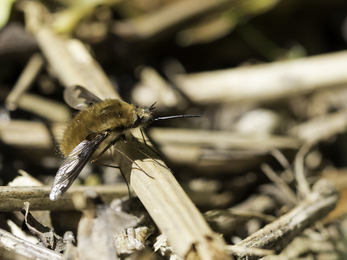
Midger Wood (c) Nathan Millar
Spring
Springs ushers in new growth with a burst of colour and activity. Birds begin to build their nests, frogs and toads migrate to spawn, insects and mammals emerge from hibernation and plants go through a growth spurt while others are flowering.
From badgers doing some spring cleaning and replacing their bedding to peacock butterflies unfurling their wings for the year. Click the (i) icons to find the image credit, or on the images themselves to find out more about what that species is up to.
Animals, birds, amphibians and more!
In spring and summer we see migratory birds return to the UK. Look out for handsome wheatears in heathland, pastures and open country and listen out for the calls of cuckoos in April as they start the look for a mate.
Hedgehogs emerge from hibernation along with the bats, so look out on warm evenings for them swooping through the air hunting the insect that start to fill the air as the weather warms.
What insects are active?
It's not just mammals that hibernate, many insects do too! Butterflies like commas emerge from log piles to unfurl their wings and set off. Look out for queen bumblebees zig-zagging across grasslands and under hedgerows as they try to find new nesting grounds to establish a colony.
If you've spotted a caterpillar in your garden and would like to know what it is, our handy caterpillar guide covers the ones you're most likely to find:
For the plant enthusiasts
Flowers like lesser celandines, violets and primroses are the first to appear and as such are an important source of nectar for insects that are coming out of hibernation.
Where and when to spot wild daffodils
Also known as ‘Lent Lily’ or ‘Easter Lily’, Britain's native wild daffodil, Narcissus pseudonarcissus, is much smaller and rarer than the 27,000 garden varieties. Once a common sight across the country, they're now restricted to pockets which put on dazzling displays in March and April.
A 9-mile circular route called The Daffodil Way explores the ‘golden triangle’ of daffodils which loops through some of the Gloucestershire strongholds.
Gwen and Vera's Fields
Found two miles north west of Newent, near Oxenhall. The nearest postcode is GL18 1RW.
In the past, some visitors would travel from as far as London to witness the display of wild daffodils and take back bunches of flowers to sell. The small area of unimproved grassland and orchard hedgerows at Gwen and Vera’s Field is one such stronghold and provides the ideal habitat for other wildflower species throughout the year, including cuckooflower, meadow vetchling, wild angelica and autumn-flowering meadow saffron. Old orchard trees and woodland boundaries also attract lots of birds.
Limited parking is available at the reserve entrance and at the nearby Forestry England car park for Shaw Common.
Ketford Banks
Between Redmarley and Dymock near Newent, the nearest postcode is GL18 2BL.
Ketford Banks is a small, steep sandy bank, famed for its displays of wild daffodils in early spring followed by fragrant bluebells in May and foxgloves over the summer. The Bank is found at an elevated position so on a clear day you can see west towards Wales, making this reserve one of the most interesting and photogenic of the remaining areas of wild daffodils in the county.
The reserve isn't signposted from the road, but is reached via a 0.4 mile walk along the public bridleway between Dymock and Redmarley at Chapel Pitch, with access on the south side of the bridge that passes over the River Leadon. The reserve is best accessed via walking.
Vell Mill Daffodil Meadow
Half a mile east of Dymock, the nearest postcode is GL18 2DG.
Advances in agriculture were used to ‘improve’ Vell Mill’s grassland over the years, which meant it has been a long and carefully thought out process to encourage the return of wildflowers through haymaking and grazing.
Vell Mill’s daffodils are complemented by a young orchard. In 2011, over 60 traditional Gloucestershire varieties of apple, pear and plum trees were planted as a small step towards redressing the loss of 75% of the county’s orchards over the past 50 years.
There is parking available for about four cars at the reserve.
Are you a dog owner?
You are more than welcome to bring your dog, though don't forget the poo bags and please keep them on a lead as there are frequently sheep and other conservation grazing animals about.
Please admire them from at least a 10m distance, don't approach them or try to feed them.





















